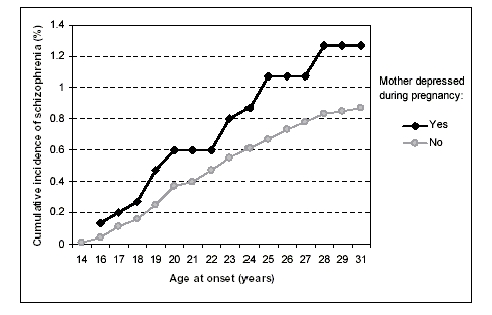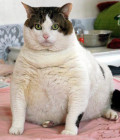Spring Poetry & Spring Birthdays

The Many Faces of Spring
In literature, Spring means a time of newness and renewed spirit after a dormant or even harsh winter period. The literary spring means rebirth and renewal, a time for second chances and healing. Hope.
Spring brings new baby animals to the farmlands and the forested lands of the world. It brings reproduction and thoughts of love to the sentient creatures of Earth.
Spring means planting new crops for the autumn harvest and to export to make a living and, hopefully, a profit.
Spring can also mean survival. Often, the tragically ill die before a winter is completed, but some live and gain even greater strength from that survival. Some people give up or finally let go in the winter, while others fith a duel with the elements and the dormancy until the spring sun smiles them back to life.
Spring is a time for particular brands of poetry, but it is also the time for particular quirks in human nature for those born in that quarter of the year.
The Poem below is named The Jane Season, after Jane Russell and what it is like to be young and beautiful in the spring of the year, but also about what it is like to be older and beautiful. The format is as the author wrote it.
Celebrity Emulation

A Poem For Spring
The Jane Season - Aurora Reynoso
Jane Russell shimmering
in a yellow pantsuit.
Bud of spring on State Street,
sweeter than all the town's
April gardens, Jane Jane Jane
Russell, senior citizen of the squared
shoulders and easy gait,
swinging her hair in the sun,
shimmering On State Street,
fire-colored scarf trembling
like an animal awake
and reaching back for me,
scattering its scents.
I'm walking behind Jane Russell.
I'm swinging my loose hair.
I'm crying, Years! Years!
Run at me! Try try try
to stop me. I'll walk through you
easy as Jane, easy as an elegant
silver knife. I'll swing my white
hair and shimmer, brightest
sun in spring.
Feminist Studies 34, nos. 1/2 (Spr/Sum 2008). © 2008 by Aurora Reynoso
Jane Russel & Marylin Monroe

Life After Winter
Why did the feminist poet choose Jane Russell for the theme of this poem? Jane Russell was a famous actress known for her physical endowments above the waist. She and Marilyn Monroe were sex symbols of the silver screen for some time and many young women and teen girls longed to emulate them in any way possible. Spring brought out a new iteration of movie star emulation each spring in the 1950s. In the 1960s, this subsided somewhat, but was also expanded with emulation of Jacqueline Bavier Kennedy, who was likely a member of the first “rock star” first Family with JFK for about 1000 days until his assassination. Only the Obama White House has created a similar stir among Americans and the world.
This poem seems to favor a senior woman in the spring, singing down State Street with an easy gate, her white hair swinging as easily as Jane Russell’s on film. Seniors can maintain attractive qualities and even sexual energy well into the end of the known human lifespan. Spring is a time for those that have survived the winter to flaunt their survival and the survival of all of their energies.

Obesity and Schizophrenia in the Spring?
Despite America's quest to be thin and beautiful, does its citizenry suffer from increased weight and mental health issues in the spring? It is possible.
Wattie, Arden & Baker. Season of birth and prevalence of overweight and obesity in Canada. Early Human Development 84 (8): 539-547 Aug 2008
Although the subjects in this study were Canadian, researchers may generalize the results to include North America.
Background: In considering prenatal life and development of each individual as a unique entities, we find some interesting results. On such result is the impact of such factors as the season of one’s birth, because this has proven to influence health later in life. Interestingly, this includes psychological as well as physical health and may even lend unmeant credence to horoscopes, which science and religion have often dismissed in the past. Specifically, it is evident for decades that schizophrenia often manifests in the late teens and in the 20s; research that is more recent shows that it may occur more often among those born in the spring.
It is also apparently true that obese individuals ages 20-29 are born more often in the spring (often the early spring) and the winter seasons. There may be a connection between springtime birth, schizophrenia, and obesity among a certain group of individuals – but additional studies need to be run in order to prove this.
In this vein, research has revealed a disproportionate number of schizophrenic patients born during the late winter and early spring seasons. Winter and spring - right next door to each other, representing conception in some spring through autumn months. What is the reason for this?
The purpose of this particular study was to find out exactly why the season of one’s birth also functions to influence the risk for obesity and less serious conditions of overweight-ness.
Spring Poetry
The Results and Possibilities For Success
The researchers looked at data from Cycle 2.1 of the Canadian Community Health Survey. They examined the birth data of participants that were 12 - 64 years old (roughly from puberty to retirement age).
The obesity risk related to the season of birth was compared with the risks already identified for overweight conditions and obesity. These previous factors were, in fact, the well-known elements of sedentary lifestyle and physical inactivity, lower socioeconomic status, diet and nutritionary mistakes, and others.
The study results were quite interesting. Considering the data as a whole among the 20-64 year olds, those falling into what is called Obese III [with a BMI or Body Mass Index greater or equal to 40] were 1.54 times (significantly) more likely to be born during winter. Thus, perhaps a winter birthday may indicate the tendency toward an obese adult.
This seasonal birth influence appears because of a winter-spring birth effect among the categories of Obese II and Obese III [BMI greater to or equal to 35] among young people ages 20-29. These younger people in one age bracket of ten years seemed to be the ones manifesting the greatest amount and frequency of obesity among all the ages.
Interestingly, a summer birthday seemed to be connected with an overweight tendency among categories Obese II and Obese III among people ages 40-49.
No season at all seems related to any BMI categories, average weight or even over- or underweight, for any of the youngest people in the study: ages 12-19 – largely teenagers. In addition, among all people aged 20 years and older (20 – 64) that fell into the category of Overweight but not yet Obese, all the seasons for birthdays were represented about equally. There seems no connection between birth season and Overweight-ness that is not at the Obesity level.
What is the answer? A greater portion of Obese III Canadians are apparently born during the winter and spring, especially in the 20-29 age bracket. Still, other already accepted risk factors listed above are still more responsible for obesity, even in this 20-29 age group, than is the season of their birthday.
Recent researchers that have looked at schizophrenia in different countries, related to birthday in winter and spring months, especially in early spring, with similar results:
- 2006 - Jordaan, Esme; Niehaus, Dana J.H.; Koen, Liezl ; Seller, Cathlene ; Mbanga, Irene ; Emsley, Robin A. Australian & New Zealand Journal of Psychiatry.
- 2006 - Reid, HM. Personality And Individual Differences 41 (7): 1185-1193 Nov 2006
- 2006 - Bersani, G; Pucci, D; Gherardelli, S; Conforti, F; Bersani, I; Osborn, JF; Hansen, V; Pancheri, P. Journal Of Maternal-Fetal & Neonatal Medicine 19 (7): 425-431 Jul 2006
We can continue to read and enjoy poetry - and emulate our favorite celebrities - while we wait for the results from new studies in the later 2000s and 2010s. Perhaps science and medicine will help us solve weight and mental health obstacles by providing a way to counteract seasonal effects ( as with Seasonal Affective Disorder). Then spring birthdays can be more fun for all.







